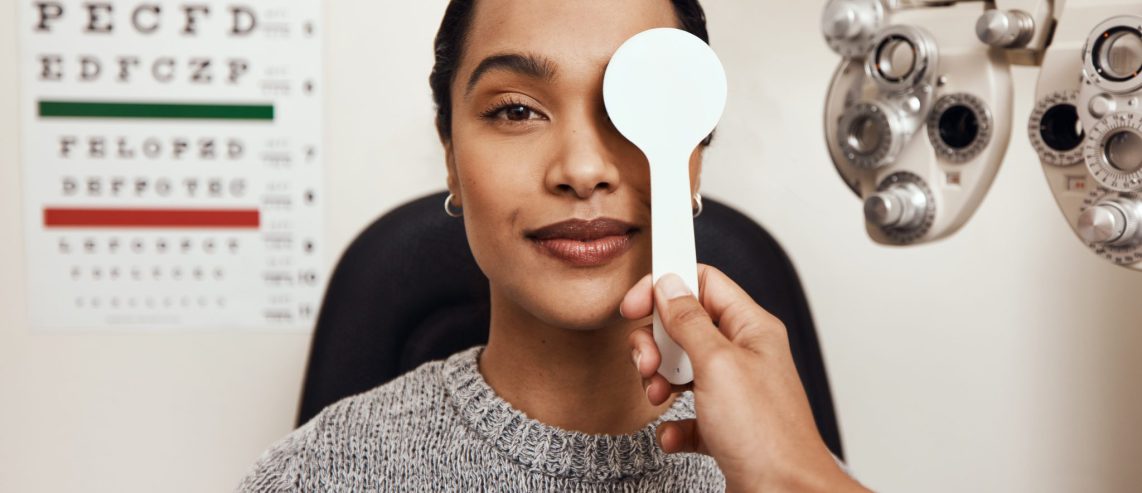You’ve always had good eyesight, but you’ve started to notice a gradual blurring of your vision and you’re experiencing a halo-like glow around lights at night. Could it be time for cataract removal surgery?
Cataracts are very common as people age. In fact, more than half of all Americans aged 80 and older either have cataracts or have had surgery to remove cataracts.
Find out more about this common eye surgery for older adults.
What Is a Cataract?
A cataract is cloudiness of the natural lens inside the eye. The lens is the clear part of the eye that helps to focus light.
At first, you may not even notice that you have a cataract. But over time, cataracts can make your vision blurry, hazy, or less colorful. They may affect your ability to read, drive, or do other activities of daily life.
Over time, cataracts can lead to vision loss – your eye doctor can help you decide when treatment is recommended.
“Most cataracts are age-related, meaning they happen because of normal changes in the eyes as you get older,” says Wesley Adams, MD, ophthalmologist, UPMC Williamsport. “But cataracts may also be caused by diabetes, eye injuries, or after surgery for another eye problem, such as glaucoma or retina surgeries. Mild cataracts may not initially need treatment or may only need a change in your glasses prescription. When a cataract becomes bad enough, or begins interfering with your activities of daily living, surgery is generally recommended.”
Dr. Adams says that it’s rare for someone’s vision to change quickly, and that cataracts usually affect vision over time. “Some patients don’t know they’re getting a cataract due to how slow the blurring is,” he says. “If you are experiencing blurring and are not seeing well enough to drive or read, it’s time to see your doctor. If cataracts are making your vision 20/50 or worse, or causing glare, the option of surgery is often discussed.” (Remember, sudden or rapid changes in vision are not usually cataract and should be reported immediately).”
Never Miss a Beat!
Subscribe to Our HealthBeat Newsletter!
Thank you for subscribing!
You can now select the specific newsletters you'd like to receive.
You are already subscribed.
Subscribe to more newsletters in our email preference center.
Sorry, an error occurred. Please try again later.
Get Healthy Tips Sent to Your Phone!
What Is Cataract Surgery Like?
The surgery itself is straight-forward. The ophthalmologist makes a small incision through the cornea. “Through these incisions, the surgeon can open the thin bag that holds the cloudy lens,” Dr. Adams explains. “When the bag is open, we use an ultrasound probe to break up and remove the cloudy lens. After the cloudy lens is removed, an artificial lens is inserted into the bag where the previous lens was removed.” A majority of the time the corneal incisions are self-sealing and usually do not require stitches.
How Long Is the Recovery from Cataract Surgery?
After surgery, an eye shield will be placed over the repaired eye to keep you from rubbing it. The first day the eye may feel sandy or gravelly, but usually feels better by the next day. A few hours after you get home you can take off the shield to start putting eye drop medications in your eye.
These eye drops will usually need to be used four times a day for the first week, then are tapered over about a month. It is often recommended that you wear the eye shield any time your sleep for the first week after surgery.
You will need to put eyedrops in your eye for about a month; usually after a week, you will reduce how often you use them per day. The eyedrops will help with swelling and irritation, so you should keep with them daily as prescribed by your doctor for a month.
You may also need to avoid some activities for a few weeks — including touching your eye, repetitive bending, swimming and lifting heavy things. Follow-up appointments are usually made for one day, one week, and one month after surgery.
Are There Risks to the Procedure?
According to the National Eye Institute, cataract surgery is one of the most common, safe, and effective types of surgery done in the United States. But, as with any surgery, there are risks.
Dr. Adams says there is a rare chance that a person’s vision could end up worse after cataract surgery, but that chance is 1 in 500. Other risks include:
- Swelling, bleeding, or infections.
- Vision loss or double vision.
- Unusual changes in eye pressure.
- Retinal detachment.
- Secondary cataracts (posterior capsule opacity).
Be sure to go to all of your checkups and call your doctor if you notice anything wrong with your eyes or vision.
What Will My Vision Be Like After Surgery?
After the surgery, the new lens allows more light to come into the eye, which improves vision for most people. About 9 out of 10 people who get cataract surgery see better afterward, but your vision might be blurry at first while your eye recovers.
Some people notice that colors seem brighter after cataract surgery. That is because the new artificial lens is clear, without the yellow or brown tint your natural lens had from the cataract.
“While cataract surgery improves vision by letting more light into the eye, than was allowed by the cloudy cataract, cataract surgery does not improve the vision lost from diseases like macular-degeneration, glaucoma, diabetic retinopathy or childhood amblyopia,” Dr. Adams explains.
Generally, there are three types of lens implants. First there is a single focus lens. This lens can be used to aim for mainly distance vision or mainly near vision. Second, for patients with astigmatism, there is a toric option, that may treat some of the astigmatism in the lens implant. Finally, a third type of lens, is a multifocal lens which may provide some level of vision at distance and near; these lenses are a trade-off to try and reduce glasses wear but are not always as sharp as the other two.
“None of the lenses are a guarantee to be without glasses, so speak with your surgeon to make sure you understand your specific options, the trade-offs or limitations of each, and costs of these different types of lenses. Take the time to ask questions you may have.”
How Do They Know Which Lens to Use?
Dr. Adams says the power of the lens implanted is determined by the shape and length of your eye, using specialized equations. “The lens implant has a power of prescription like glasses,” he says. “We determine that using the shape of your cornea, how much focusing power it has, and the distance from where the lens is going to sit relative to your macula.”
Once your eye is completely healed, you will likely need a new prescription for glasses or contact lenses for your best vision.
“Cataract surgery improves vision loss related to the cloudy lens, like putting a clearer lens on a camera. Cataract surgery, or a new lens, does not correct vision loss from damage to the sensor or wires in the camera, like macular degeneration or damage to the nerves inside the eye, Dr. Adams explained.” Remember sudden loss of vision is not cataract and often is an emergency. If you experience sudden loss of vision, contact your doctor immediately or go to the emergency room.
Editor's Note: This article was originally published on , and was last reviewed on .
Sources
https://www.nei.nih.gov/learn-about-eye-health/eye-conditions-and-diseases/cataracts
https://www.nei.nih.gov/learn-about-eye-health/eye-conditions-and-diseases/cataracts/cataract-surgery
About UPMC
Headquartered in Pittsburgh, UPMC is a world-renowned health care provider and insurer. We operate 40 hospitals and 800 doctors’ offices and outpatient centers, with locations throughout Pennsylvania, Maryland, New York, West Virginia, and internationally. We employ 4,900 physicians, and we are leaders in clinical care, groundbreaking research, and treatment breakthroughs. U.S. News & World Report consistently ranks UPMC Presbyterian Shadyside as one of the nation’s best hospitals in many specialties and ranks UPMC Children’s Hospital of Pittsburgh on its Honor Roll of America’s Best Children’s Hospitals. We are dedicated to providing Life Changing Medicine to our communities.

